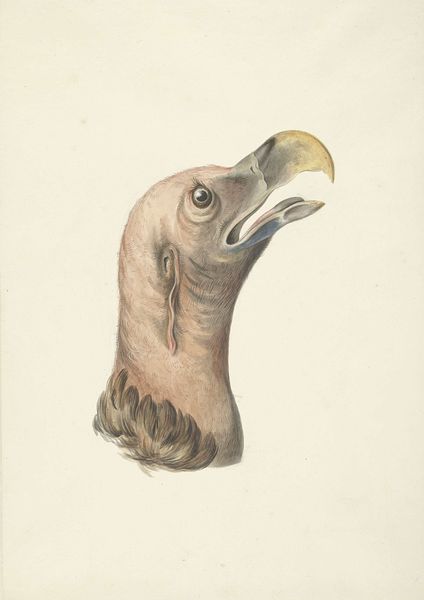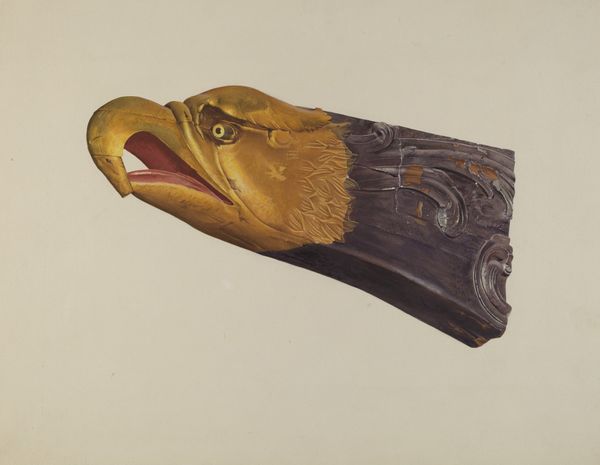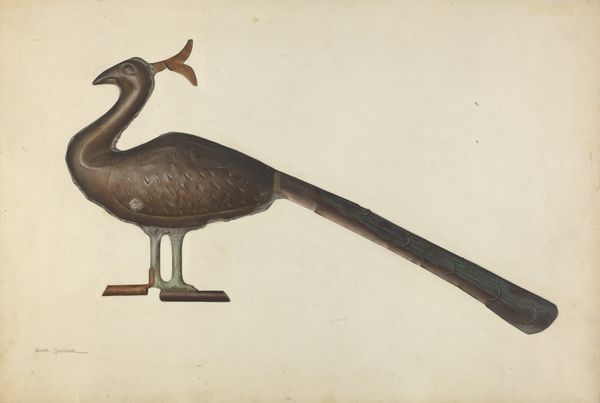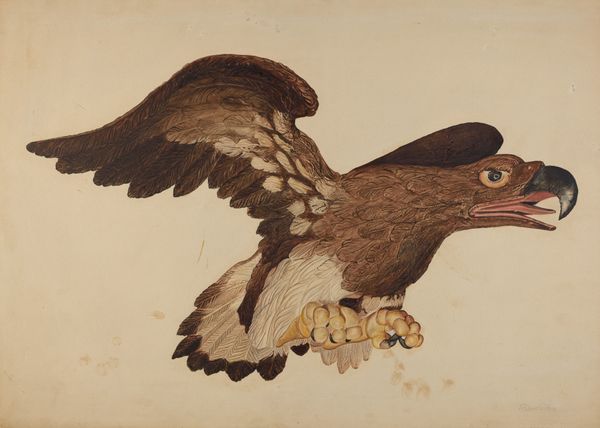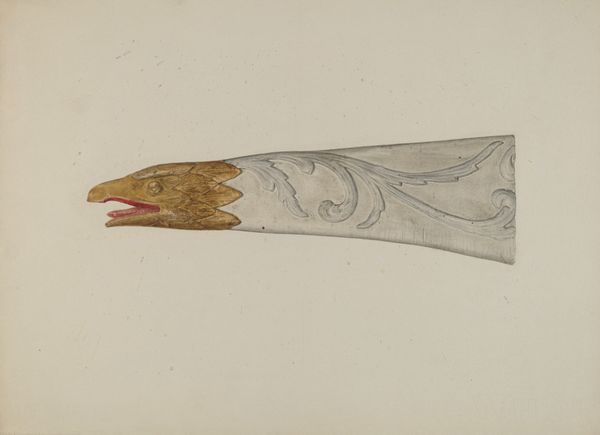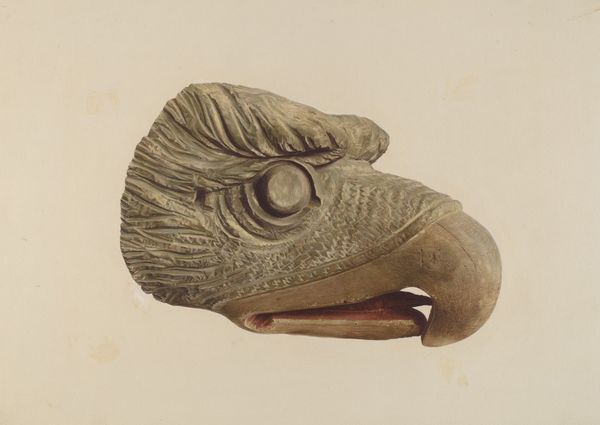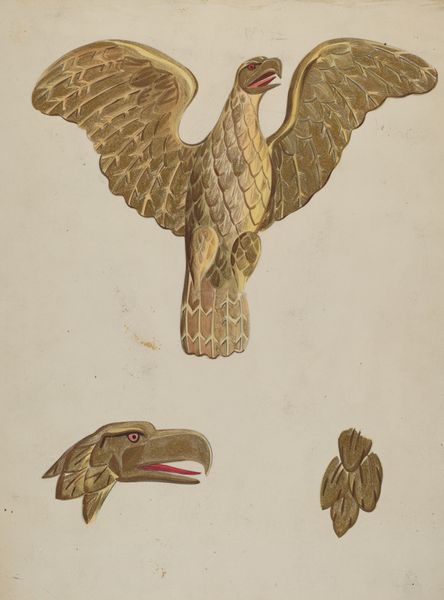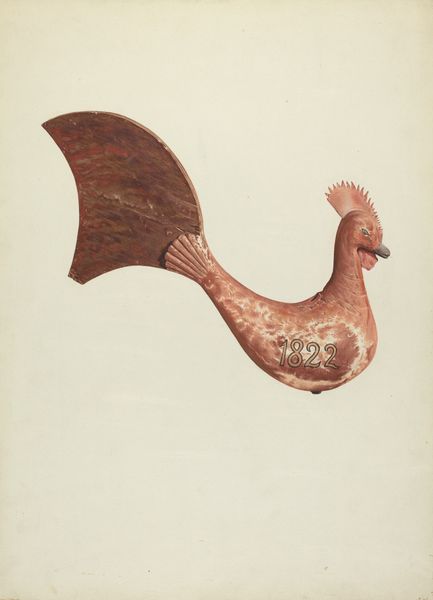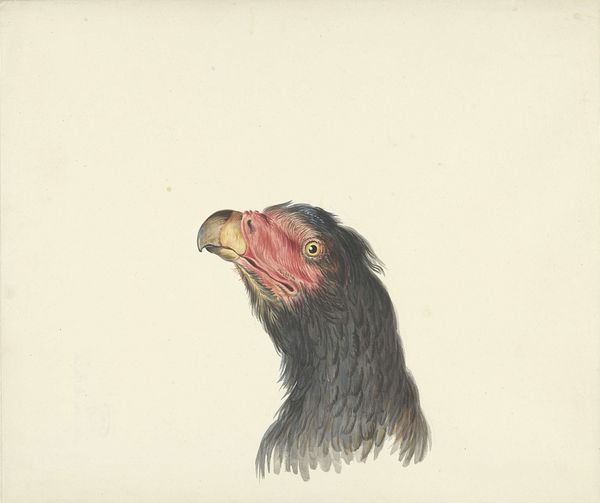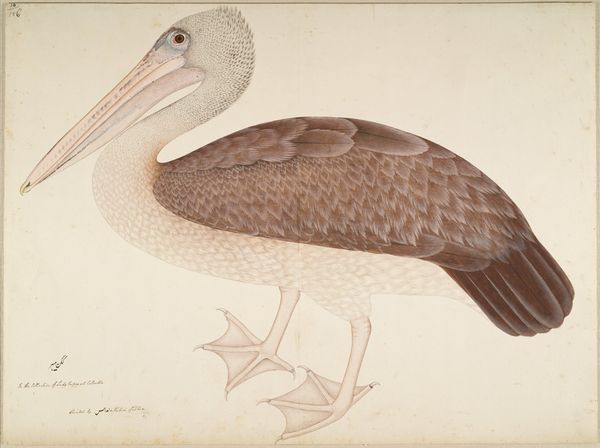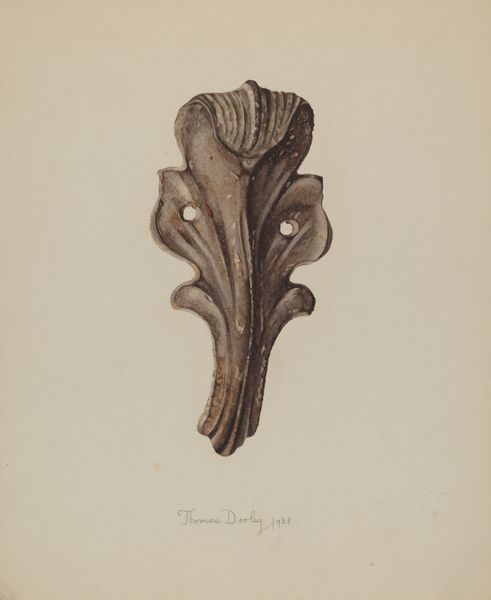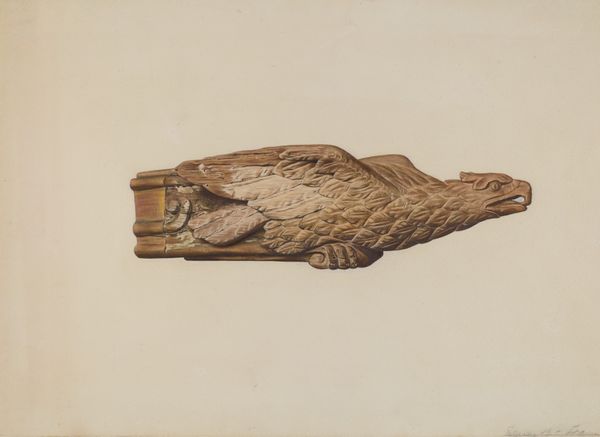
drawing, watercolor
#
portrait
#
drawing
#
landscape
#
charcoal drawing
#
watercolor
#
watercolour illustration
#
realism
Dimensions: overall: 27.8 x 37.7 cm (10 15/16 x 14 13/16 in.)
Copyright: National Gallery of Art: CC0 1.0
Curator: Here we have "Eagle", a watercolor drawing created by Jerome Hoxie sometime between 1935 and 1942. What strikes you most about it? Editor: There's a starkness to the composition that unsettles me. The intensity of that lone eye on a disembodied head immediately grabs attention. Curator: Hoxie renders the head of an eagle with great precision. It’s a powerful representation, particularly when we consider the social and political climate of the period. The eagle, a ubiquitous symbol of national pride and power in the US. This was painted during the Great Depression. What do you make of the artist's choice of subject? Editor: During that period, there was, rightfully, immense socio-economic tension, thus using it here becomes deeply compelling and nuanced. Its association with power can symbolize both promise and exclusion, strength and aggression. Perhaps a silent commentary on whose freedom and prosperity the nation championed. Curator: It's true, that reading brings forth questions of American identity, the nation's projection of power and the relationship with nature. Given its naturalistic style, how does the artwork interact with the tradition of portraiture and landscape painting? Editor: By removing it from a natural environment and isolating the subject, it’s also transforming what could be a serene wildlife study into a forceful symbol, one demanding attention and analysis. Its almost sculptural rendering with detailed feathers suggests power and scrutiny under constant social revision and cultural adaptation. Curator: Exactly! I agree on that revision: there’s such intensity in that singular gaze. Hoxie invites viewers to consider what exactly America stood for. Editor: Absolutely, and considering this eagle devoid of its body, its nation. Whose eagle is it? What promise of the “American Dream” does it herald? Curator: Well, that certainly has provided food for thought about symbols and their evolving place within society. It is time to close, but thank you for your contributions. Editor: Likewise. The conversation leaves one thinking long after walking away from this work.
Comments
No comments
Be the first to comment and join the conversation on the ultimate creative platform.

